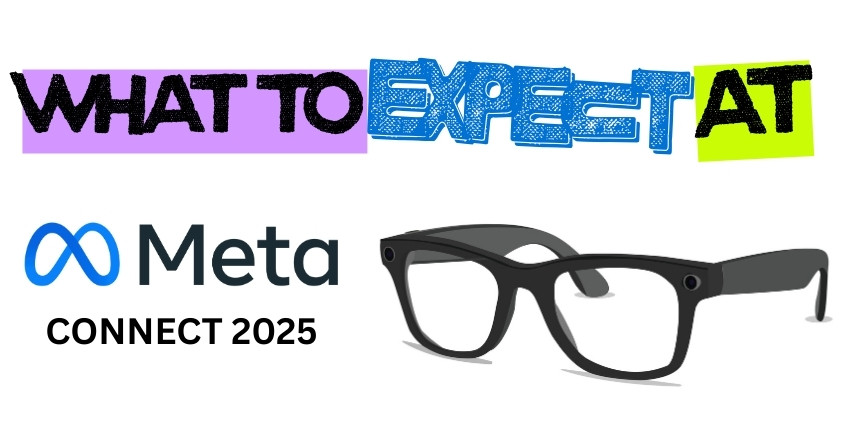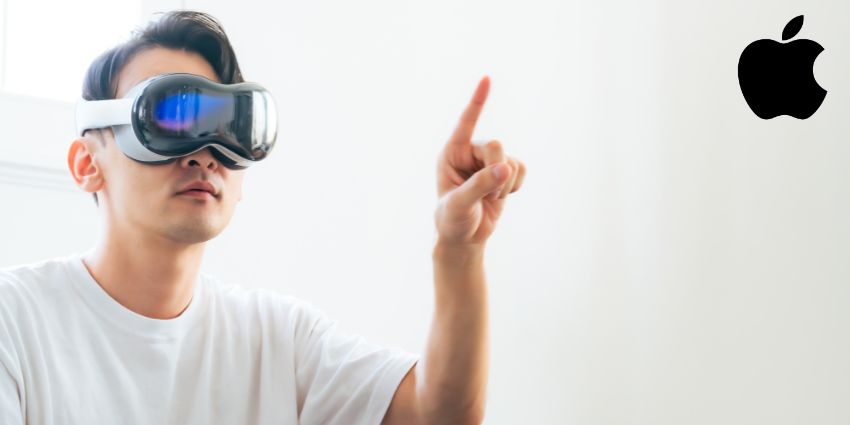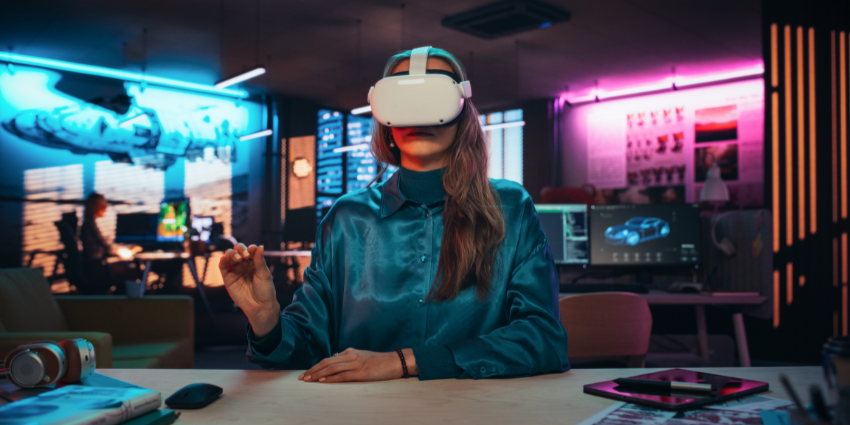Last year was a busy year for XR. Avid XR Today readers will be more than familiar with the big XR moments in 2024, including the likes of MR headsets, digital twins, Apple Vision Pro, Orion, and others; those moments are becoming history, however, and tomorrow’s innovations will take a stride.
In 2024, the AI tidal wave dominated the emerging technology landscape, overtaking many XR technology ambitions. New genAI products appeared, or the technology became commonplace in preexisting services.
On the other hand, in 2024, investments into AR smart glasses also took place, building the foundation for what many supporters claim will be the next smartphone moment.
AR smart glasses leaders commonly state how wearable technology has the potential to allow users to interact with RT3D content, leverage AI based on one’s surroundings, and communicate with others hands-free, potentially ushering in the next form of human-computer interaction.
Many vendors are trying to claim a stake in this seemingly prosperous AR smart glasses market. In 2024, Meta made its commitment clear by highlighting its related success via its EssilorLuxottica partnership, and on the other hand, Samsung spent the year teasing audiences with an XR device to rival Meta’s and others, while the device is still yet to hit the market, Samsung appears ready to debut the product in 2025. On the other hand, it is essential to note that firms such as XREAL, Vuzix, and ReoNeo are working to create smart glasses that are ready for broad consumer use cases.
While the aforementioned smartphone moment for augmented reality is still many years away, the first firm to set a precedent and create the first significant hype and adoption wave for the technology will become frontrunners and be seen as innovators in the eyes of border consumer audiences.
For business, AR smart glasses are also building a strong foundation, with firms like RealWear already deploying smart wearables to help with demanding professional environments. Moreover, accompanying products like MDM and XRaaS solutions create the foundation for smart glasses to find a use case in enterprise.
Additionally, while AR is already finding niche use cases in businesses, if AR smart glasses hit its consumer smart phone moment, then like in years past with iPhone and Andriod devices, decision-makers will start to ask, ‘How can our company use this new technology to optimise operations and save money?’
To reach these prospects, leaders in AR technology are needed who are ready to invest time and capital to secure that future. In 2025, it appears Meta and Samsung are already posing themselves to take first place in that race just days into the new year.
Meta Improve Ray Ban Smart Glasses Display Abilities
Kicking off 2025, Meta seems sharp in its ambitions for AR smart glasses. Already, rumours are swirling around its Ray-Ban smart glasses, noting how the entry-level wearable will gain an AR heads-up display sooner than first expected.
While the Ray-Ban wearable is technically quite far away from what many perceive as a true AR smart glasses product, the consumer device is seemingly proving a successful testbed for features such as AI integrations, lite AR visualisations, and spatial recognition.
The Orion device, for example, which Meta highlighted last year, showcased the abilities of a fully-fledged AR wearable, including deeply ingrained AI features and support for advanced 3D augmented displays. Meta themselves called Orion a time machine, showcasing the future of smart glasses. The lite Ray-Ban product gives early adopters a version of that future today.
However, as Ray-Ban has just gained AI integration that is ready for numerous regions, Meta may be taking another step forward with its Ray-Ban product.
According to a report by the Financial Times, Meta is planning to introduce AR heads-up display visualisations for the Ray Ban device. Reports suggest that in 2025, Meta will debut a new generation of the device, which will notably include a single small in-lens screen for displaying more advanced augmented visuals.
The details of the next-generation Ray Ban smart glasses are slim, as Meta has yet to touch on the subject. According to reports, the new Ray Bans are due in 2025, bringing accessible consumer AR technology closer to Orion’s vision. If Meta does debut the next-gen smart glasses this year, it will most likely follow Meta Connect, whereby the firm introduces its new technology.
In 2024, Meta announced its new MR headset and its most recent Ray Ban smart glasses iteration. 2025’s new products will likely not hit the market until some time has settled following the previous device generations, allowing the company to learn and optimise its portfolio in 2025.
Will Samsung Enter the AR Wearables Market in 2025?
In 2024, Samsung was clear in its commitment to developing an XR wearable to join its Galaxy ecosystem. This is a huge benefit to Samsung’s immersive technology goals as it gives any future XR device a supporting foundation of Galaxy hardware and software.
Details have been slim, but Samsung’s passion is evident. In 2025, the XR market may receive even more information and perhaps the debut of a Samsung XR product.
The experts at 91mobiles discovered a new drip of information which could provide crucial insight into the future of the firm’s upcoming immersive device.
As of a new Samsung patent request, the firm highlights its research and development into a smart glasses device that includes built-in microphones and speakers, which could indicate features similar to the Meta Ray-Ban, such as media playback, voice control and remote communications.
The device notably looks to optimise voice-input integrations by including features to reduce speaker noise caused by the second-hand interface a user may experience when using the device on the go, such as powerline interference. Moreover, the recent Samsung patent notes that the device will include a touch sensor for further user input options.
Patents do not provide a complete picture of what a device may become once it hits the market; however, combined with previous evidence of Samsung’s upcoming device, a picture presents itself and may bring a lucrative alternative to Meta’s smart glasses race.
Late last year, AndroidXR introduced an XR operating system and the first look at Samsung’s headset. Codenamed “Project Moohan,” Samsung’s XR headset is set to be available for purchase next year. While the features of Project Moohan are still speculative, AI is expected to play a significant role in the device.
As part of the Android XR announcement, Google emphasized the crucial role of Gemini AI assistants in creating new opportunities to interact with the headset and its visualizations.
Google also highlighted that due to its familiar Android foundation, the XR operating system can support a wide range of existing mobile and tablet applications and purpose-built Android XR content. This development addresses a significant hurdle in the broader XR adoption journey: users need access to various applications and compelling services to encourage them to invest in an XR device.
The future of smart glasses in 2025 is still very much open, but as more products come out in the year, vendors are looking to build upon 2024’s foundation.
Join our XR Community – With Your Voice at the Center
Join a fast-growing community of XR innovators, creators, and change makers. Share your insights, get inspired and shape the future of immersive tech. Join the conversation today.







